Smart Displays and Children: Educational Content and Parental Controls
20 February 2025
In today's rapidly evolving digital world, it's no surprise that technology is becoming a more prominent part of our children's lives. From smartphones to tablets to smart speakers, kids are growing up surrounded by gadgets. One of the hottest tech trends right now is the smart display—a device that combines the functionality of a tablet with the convenience of a smart speaker.
But as with any new technology, parents are left wondering: Are smart displays good for kids? Can they be educational, or are they just another screen to worry about? And how do you ensure your child is safe while using one? In this article, we'll dive into how smart displays can offer educational content for children and how parental controls can help keep their tech experience safe and healthy.

What Are Smart Displays?
Before we get into the nitty-gritty of smart displays and kids, let's first clarify what a smart display is. A smart display is a device that combines the voice-activated features of a smart speaker (like Amazon Echo or Google Nest) with a touchscreen display. These devices can be used to control smart home gadgets, watch videos, make video calls, play games, and much more.In essence, they’re like a tablet with superpowers.
You’ve probably seen or heard of popular smart displays like the Amazon Echo Show or Google Nest Hub. These devices are gaining popularity in homes because they're incredibly versatile. You can ask them to play music, show you the weather, control your lights—the list goes on. But when it comes to kids, there’s a whole other side to these devices that can make them both a blessing and a challenge.

The Role of Smart Displays in Education
A Gateway to Educational Content
Let’s be honest: kids love screens. Whether it's watching cartoons, playing games, or interacting with educational apps, screens can be incredibly engaging for kids. But that doesn’t have to be a bad thing. In fact, smart displays can be a powerful tool for learning, as long as they're used the right way.Smart displays offer access to a wide range of educational content designed specifically for kids. Platforms like YouTube Kids, Khan Academy, and even Amazon Kids+ provide a ton of kid-friendly content that’s both fun and educational. Whether it’s learning the ABCs, watching science experiments, or mastering math concepts, smart displays can turn screen time into learning time.
For younger children, voice-activated learning games can help improve their vocabulary, counting skills, and even motor functions. Imagine asking the smart display to “play an alphabet game” and your child is instantly engaged in a fun, interactive activity that teaches them something new. It's like having a digital tutor right in your living room.
Video Calls with Family: A Boost in Communication Skills
Smart displays are also a fantastic way for children to stay connected with family members, especially during times when they can’t meet in person. Video calls help kids build communication skills, and with the interactive display, they can see facial expressions, learn social cues, and engage in conversations that develop their social skills.In fact, some studies suggest that when kids use video calling to stay in touch with relatives, it mimics the benefits of face-to-face interaction. So, while you might be worried about "too much screen time," using a smart display for family interactions can actually be constructive.
Interactive Storytelling
Another cool feature of smart displays is their ability to offer interactive storytelling. Many smart displays come equipped with apps that can read stories aloud to children while showing illustrations on the screen. The interactive element makes the experience more engaging than just listening to an audiobook.Some smart displays even offer “choose your own adventure” style stories, where kids can make decisions that affect the outcome of the tale. This encourages critical thinking and keeps them engaged in the process. It’s like having a bedtime story with a twist!
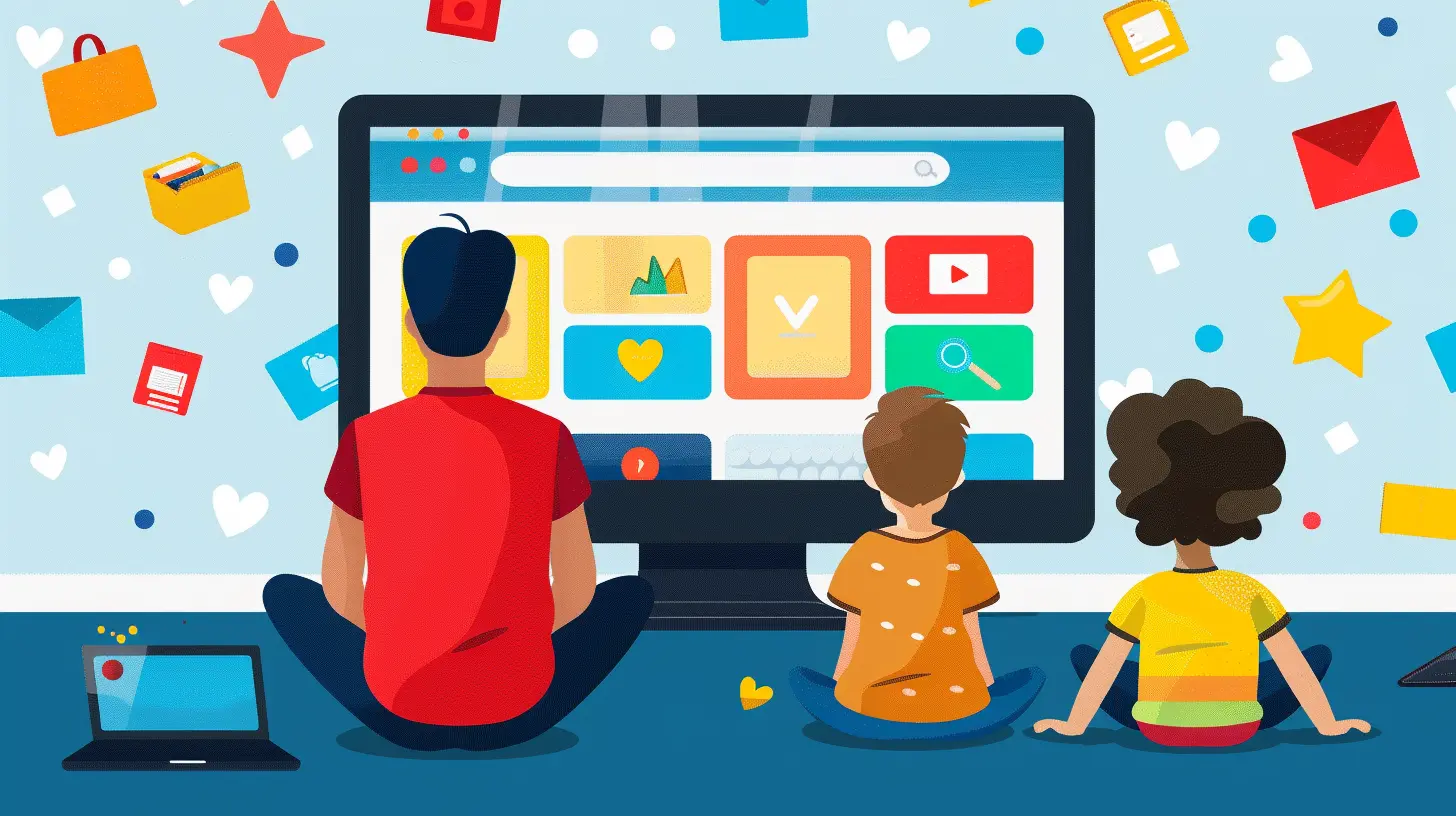
Parental Controls: A Must-Have for Safety
Why Parental Controls Matter
While smart displays can be a great educational tool, they can also open the door to some risks if not properly monitored. The internet is vast, and not all content is suitable for young eyes. That's where parental controls come into play.Parental controls on smart displays allow you to manage what your child has access to and ensure that they're not exposed to inappropriate content. You wouldn’t leave your child unsupervised in a room full of strangers, right? The internet isn't much different. Parental controls act like a digital chaperone, guiding your child towards safe and age-appropriate experiences.
Setting Up Parental Controls
Most smart displays come with built-in parental control settings that allow you to customize your child’s experience. Here’s how you can set it up:1. Create a Child Profile: Many devices, like Amazon's Echo Show, let you create a separate child profile. This ensures that the content your child sees is tailored to their age group, and you can control which apps or features they can access.
2. Set Time Limits: Let’s face it—kids can easily get sucked into screens for hours on end. Setting screen time limits ensures that they don’t spend too much time glued to the display. You can typically set daily time limits or even schedule "downtime" periods where the device is unavailable for use.
3. Content Filters: Most smart displays allow you to filter out inappropriate content. For example, you can block access to certain websites, restrict video content to age-appropriate levels, or even disable certain features like purchasing.
4. Monitor Usage: Some smart displays let you monitor your child’s usage history so you can see what apps they’re using and how much time they’re spending on the device. This transparency can help you make more informed decisions about their screen time.
Voice Recognition and Privacy
One of the coolest features of smart displays is voice recognition. These devices can often recognize different voices, meaning they can tailor responses depending on who’s speaking. If your child asks the smart display a question, it will know it’s a child and provide an appropriate answer.However, with this feature comes the concern of privacy. Some parents worry about these devices "listening" all the time. While smart displays do have microphones that listen for voice commands, most have privacy settings that allow you to mute the mic or delete voice recordings. It’s essential to familiarize yourself with these settings to ensure your child's safety.
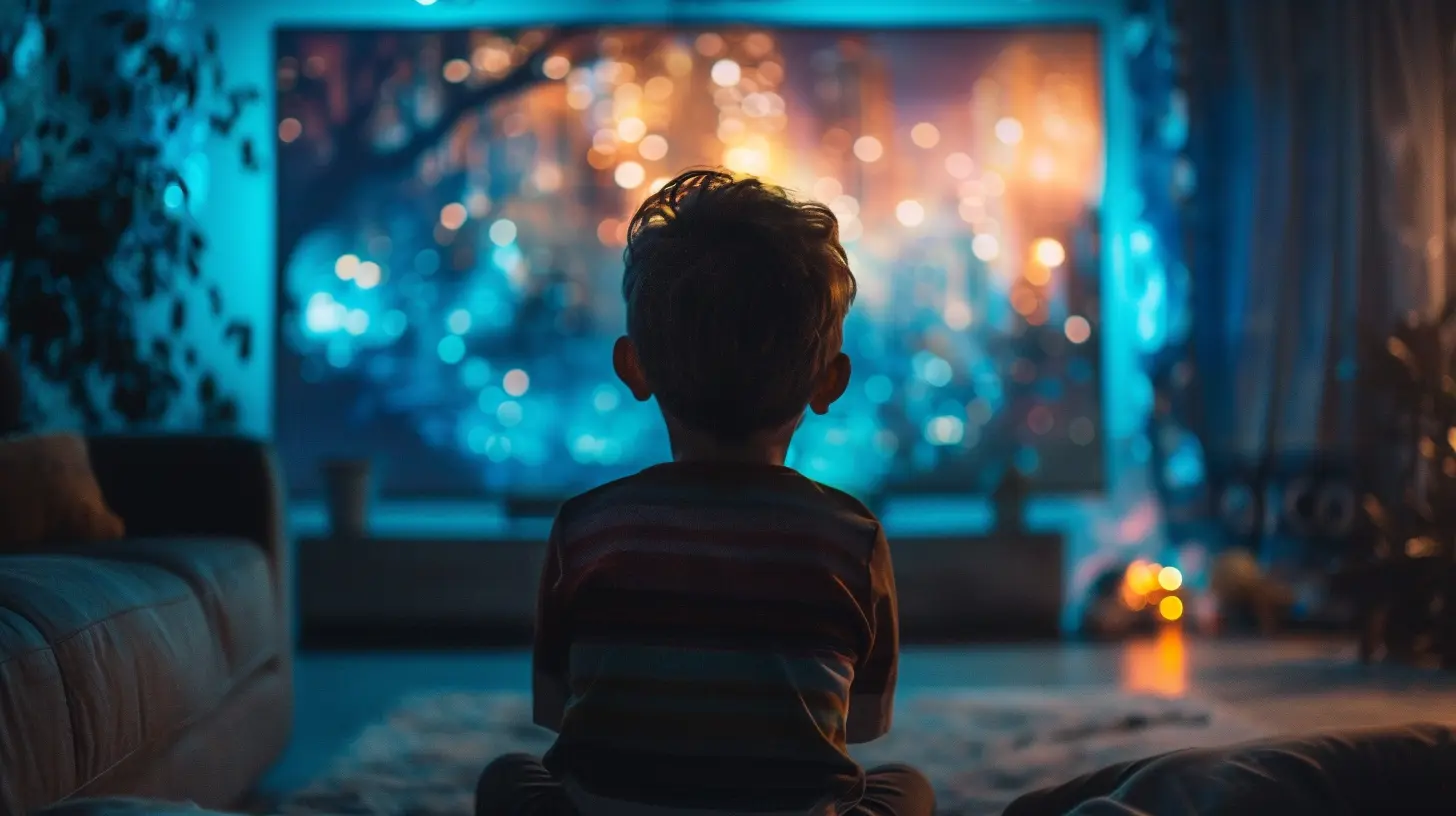
Balancing Screen Time and Real-World Activities
While smart displays can be a great educational tool, moderation is key. Kids still need physical activity, face-to-face interactions, and time to explore the world around them. Over-reliance on screens can lead to issues like reduced attention spans or even sleep disturbances.The key is to strike a balance. Use smart displays as a supplement, not a substitute, for real-world experiences. Encourage activities that combine both. For example, if your child loves cooking, use the smart display to pull up a kid-friendly recipe and let them follow along in the kitchen. Or, if they’re learning a new language, use the display’s interactive apps to practice, but also make time for real-life conversations.
Age-Appropriate Use of Smart Displays
It’s also important to consider the age of your child when introducing a smart display. For younger children, interactive games and educational videos are fantastic, but you’ll want to ensure content stays simple and age-appropriate.For older children, you can gradually introduce more sophisticated content like documentaries, podcasts, or even educational YouTube channels. Just remember to always keep an eye on what they’re consuming and ensure that it aligns with your family’s values and safety guidelines.
Final Thoughts
Smart displays can be a fantastic addition to a child’s learning environment, offering educational content that makes learning fun and interactive. Features like video calls and storytelling can help enhance communication and creativity. However, just like with any form of technology, parental involvement is crucial.With the right parental controls in place, smart displays can offer kids a safe and enriching digital experience. They can turn these devices from simple entertainment gadgets into powerful educational tools. But remember—balance is key. Smart displays are great, but they shouldn't replace real-world experiences or human interaction.
So, are smart displays the future of children's learning? Possibly! But as always with tech, it’s all about how you use it.
all images in this post were generated using AI tools
Category:
Smart DisplaysAuthor:

Reese McQuillan
Discussion
rate this article
20 comments
Anisa Brown
Great insights! Balancing fun and safety is key!
April 6, 2025 at 3:04 AM

Reese McQuillan
Thank you! Striking that balance is crucial for fostering a safe and engaging learning environment for kids.
Zevan Love
Exciting potential for learning together!
April 2, 2025 at 3:34 AM

Reese McQuillan
Thank you! We’re excited about the possibilities for enhancing children's learning experiences with smart displays.
Lucas Henson
What a fantastic read! It's heartwarming to see how smart displays can enrich children's learning experiences while keeping parents in control. Balancing education and entertainment is key, and these tools offer a wonderful opportunity for families to explore together. Cheers to a bright future of tech-savvy kids and engaged parents!
March 26, 2025 at 8:53 PM

Reese McQuillan
Thank you for your kind words! I'm glad you found the article insightful. It's exciting to see how smart displays can foster collaboration and learning between parents and children. Cheers to a tech-savvy future!
Jade Alexander
Ah, yes! Because nothing screams "great parenting" like letting a shiny smart display babysit your kids while you sip coffee. Who needs a conversation when you can just watch educational cat videos? Progress, folks, pure progress!
March 25, 2025 at 5:17 AM

Reese McQuillan
Thank you for your perspective! While smart displays can complement parenting, it's essential to balance screen time with direct interaction and conversation for well-rounded development.
Morrow Gray
Great insights! It's crucial to balance educational content with effective parental controls for children's safety. Thank you!
March 19, 2025 at 11:44 AM

Reese McQuillan
Thank you for your feedback! I completely agree that balancing education with safety is essential for our children's well-being.
Cassidy McPhail
Empowering kids with smart displays fosters learning while parental controls ensure a safe, enriching environment. A win-win for everyone!
March 18, 2025 at 4:56 AM

Reese McQuillan
Thank you for your insight! Balancing educational content with parental controls is indeed essential for fostering a safe and enriching learning experience for children.
April McWhorter
Great insights on balancing tech and kids’ learning!
March 17, 2025 at 5:14 AM

Reese McQuillan
Thank you! I’m glad you found the insights helpful for navigating tech in children's education.
Teagan McClellan
Empower your child's learning journey with smart displays—transforming education while ensuring safety through robust parental controls!
March 16, 2025 at 9:29 PM

Reese McQuillan
Thank you for highlighting the importance of smart displays in enhancing education while prioritizing safety through effective parental controls!
Zephira Fisher
Great insights on the balance between educational content and parental controls for smart displays. This discussion is vital for guiding parents in making informed decisions for their children's screen time. Thank you!
March 13, 2025 at 11:47 AM

Reese McQuillan
Thank you for your thoughtful comment! I'm glad you found the discussion valuable for guiding parents.
Charlie Wilson
Great insights! Smart displays can be a fantastic tool for kids, balancing learning with fun. I love the emphasis on educational content and parental controls—it’s so crucial for keeping our little ones safe while they explore. Can’t wait to see more innovations in this space!
March 10, 2025 at 9:33 PM

Reese McQuillan
Thank you! I'm glad you found the insights valuable. Ensuring a safe and enriching experience for children is essential, and I share your excitement for future innovations in smart displays!
Lysara Kelly
This article beautifully highlights the balance between leveraging smart displays for children's education while ensuring safety through parental controls. It's crucial for nurturing curious minds in a digital world.
March 9, 2025 at 12:07 PM

Reese McQuillan
Thank you for your thoughtful comment! I'm glad you found the balance between education and safety in smart displays important—it truly is essential for fostering learning in today's digital age.
Raelyn McTiernan
In the glow of smart screens, young minds ignite, Education blossoms under watchful eyes, With parental guidance, a balance finds light, Learning's dance in digital skies.
March 7, 2025 at 5:10 AM

Reese McQuillan
Thank you for your poetic reflection! It beautifully captures the essence of using smart displays for educational growth while highlighting the importance of parental involvement.
Bianca Underwood
This article highlights the crucial balance between leveraging smart displays for educational content and ensuring robust parental controls. While technology can enhance learning, parents must remain vigilant to protect children from inappropriate content and promote healthy screen time habits.
March 5, 2025 at 1:18 PM

Reese McQuillan
Thank you for your insightful comment! I agree that balancing educational benefits with appropriate parental controls is essential for fostering healthy and safe learning experiences for children.
Fable Tucker
Great insights on balancing tech and kids!
March 4, 2025 at 5:55 AM

Reese McQuillan
Thank you! I'm glad you found the insights helpful!
Giselle Becker
Great insights! Balancing fun and learning for kids is key. Smart displays can be fantastic tools with the right parental controls in place!
February 28, 2025 at 7:56 PM

Reese McQuillan
Thank you! I completely agree—finding the right balance between fun and learning is essential, and smart displays can be effective tools when used responsibly.
Greta Whitley
Great article! It’s wonderful to see how smart displays can enhance children's learning while giving parents peace of mind with robust controls. Balancing technology with education is key, and this piece highlights the supportive role of smart devices in our kids' growth.
February 28, 2025 at 1:08 PM

Reese McQuillan
Thank you for your kind words! I'm glad you found the article insightful. Balancing technology and education is indeed crucial for our children's development.
Wolf McIntire
What a fantastic read! Smart displays can truly transform kids' learning experiences while giving parents peace of mind with robust controls. It's exciting to see technology enhance education and creativity in our little ones. Here's to fun, safe, and enriching learning adventures ahead! 🎉✨
February 27, 2025 at 4:36 AM

Reese McQuillan
Thank you! I'm glad you found it insightful. It's inspiring to see how smart displays can positively impact children's learning while providing parents with the necessary tools for safe exploration. Here's to more innovative solutions in education! 🎉
Kestrel Coffey
Smart displays can serve as powerful educational tools for children when used wisely. Balancing engaging content with robust parental controls ensures a safe environment that nurtures curiosity while fostering critical thinking and responsible technology use. Moderation is key.
February 22, 2025 at 12:20 PM

Reese McQuillan
Thank you for highlighting the importance of balance in using smart displays for children's education. Your insights on engaging content and parental controls are crucial for fostering a safe and enriching learning environment.
Quentin Jacobs
This article raises fascinating points about the balance between educational content and screen time for children! I'm curious about how different smart displays implement parental controls. Do they allow customization based on age, and how effective are these tools in promoting learning while limiting distractions? Looking forward to learning more!
February 21, 2025 at 8:57 PM

Reese McQuillan
Thank you for your thoughtful comment! Many smart displays do offer customizable parental controls based on age, allowing parents to tailor content. The effectiveness of these tools varies, but when used properly, they can enhance learning while minimizing distractions. Stay tuned for more insights!
Alexa Rogers
This article raises intriguing points about the balance between technology and childhood development. I'm curious how smart displays can enhance learning while ensuring safety. It would be interesting to hear more about the effectiveness of different parental controls and the role they play in guiding children's interactions with these devices.
February 21, 2025 at 5:01 AM

Reese McQuillan
Thank you for your thoughtful comment! Smart displays can certainly enhance learning by providing interactive educational content, but it's crucial to implement effective parental controls to ensure safety. Exploring various parental control options can help guide children's interactions and create a balanced approach to technology use in their development.
MORE POSTS

How to Optimize Bluetooth Connectivity in Crowded Areas
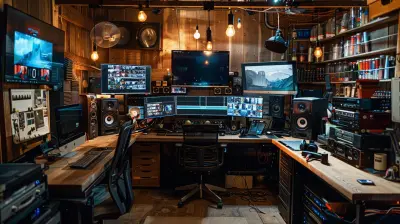
The Rise of Online Video Editors: Are They Worth It?

How Customer Data Platforms are Powering Personalization in the Digital Age

Battery Life Showdown: Which Laptop Lasts the Longest?

The Rise of Green Data Centers: Renewable Energy and the Tech Industry
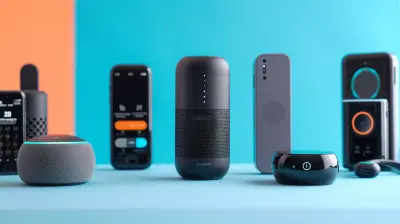
Best Bluetooth Gadgets for Smart Home Automation

The Impact of Quantum Computing on Data Center Design

How Bluetooth is Enabling Seamless File Sharing Between Devices

A Deep Dive into the Best Bluetooth Headphones for Crystal-Clear Sound
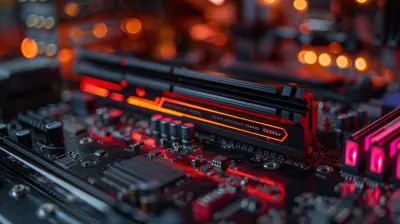
The Advantages of DDR5 RAM: Should You Upgrade Now?

How AI is Shaping the Future of Home Automation

The Power of RPA (Robotic Process Automation) in Digital Workflows